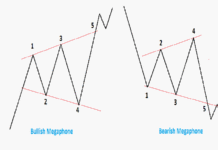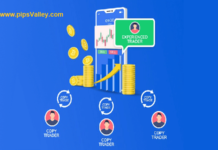
Intraday forex trading, often referred to as day trading, is a style of trading in which traders open and close positions within the same trading day. The goal of intraday trading is to profit from short-term price movements in the foreign exchange (forex) market. Here are some key aspects and considerations for intraday forex trading:
Timeframe:
Intraday traders typically use short timeframes for their analysis and trading, such as 1-minute, 5-minute, 15-minute, or 1-hour charts. These shorter timeframes allow traders to capture small price movements within a single trading session.
Volatility:
Intraday traders often seek currency pairs that exhibit higher volatility during the trading day because greater price swings can present more trading opportunities. However, higher volatility also means increased risk.
Technical Analysis:
Technical analysis plays a significant role in intraday forex trading. Traders use various technical indicators (e.g., moving averages, RSI, MACD) and chart patterns to make trading decisions based on price charts.
Fundamental Analysis:
While intraday trading primarily focuses on technical analysis, some traders also pay attention to important economic events and news releases that can impact currency prices in the short term.
Risk Management:
Effective risk management is crucial for intraday traders. This includes setting stop-loss orders to limit potential losses, using proper position sizing, and managing leverage carefully. Intraday trading can be highly leveraged, which magnifies both profits and losses.
Trading Strategies:
Intraday traders use various strategies, including scalping (taking very small profits from numerous quick trades), day trading (holding positions for a few hours), and swing trading (holding positions for a portion of the trading day). The choice of strategy depends on a trader’s preferences and risk tolerance.
Market Hours:
The forex market operates 24 hours a day, five days a week, with different trading sessions around the world (e.g., Asian, European, North American sessions). Intraday traders often focus on specific sessions when there is higher liquidity and volatility, such as the overlap between the European and North American sessions.
Psychology:
Intraday trading can be mentally demanding due to the need for quick decision-making and the potential for rapid price changes. Traders need discipline and emotional control to avoid impulsive actions.
Education and Practice:
Before engaging in intraday forex trading, it’s essential to acquire a solid understanding of the market, trading strategies, and risk management. Many traders practice on demo accounts to hone their skills before trading with real money.
Monitoring:
Intraday traders need to closely monitor their positions and the markets throughout the trading day. Price movements can happen swiftly, and quick reactions may be necessary.
Intraday forex trading can be profitable for traders who have a well-defined strategy, effective risk management, and the ability to stay disciplined. However, it’s also associated with higher risks and requires constant attention. As with any form of trading, it’s important to be aware of the potential for both gains and losses.
Related Post:
The Part-Time Traders Guide to Forex Mastery



























